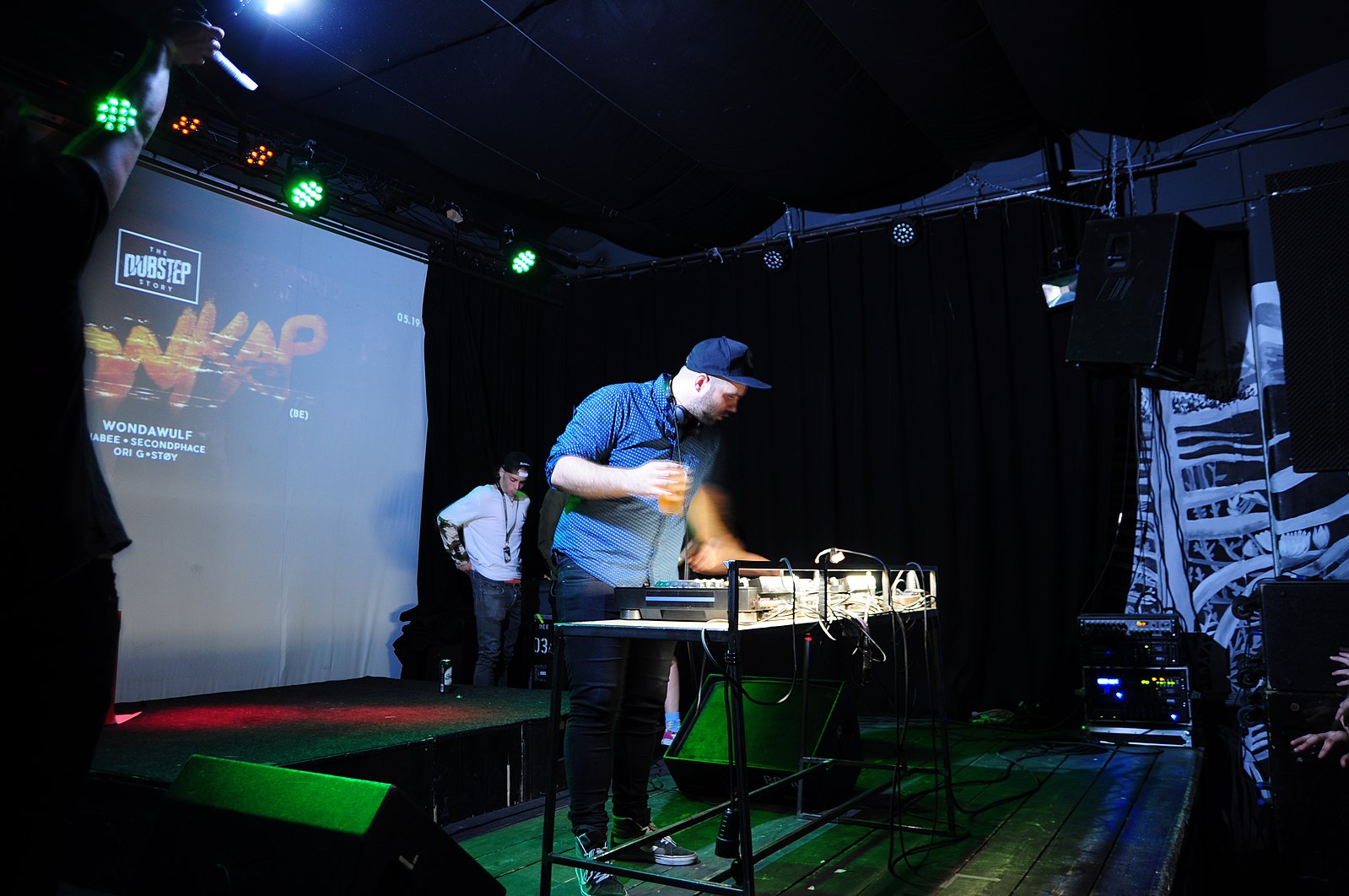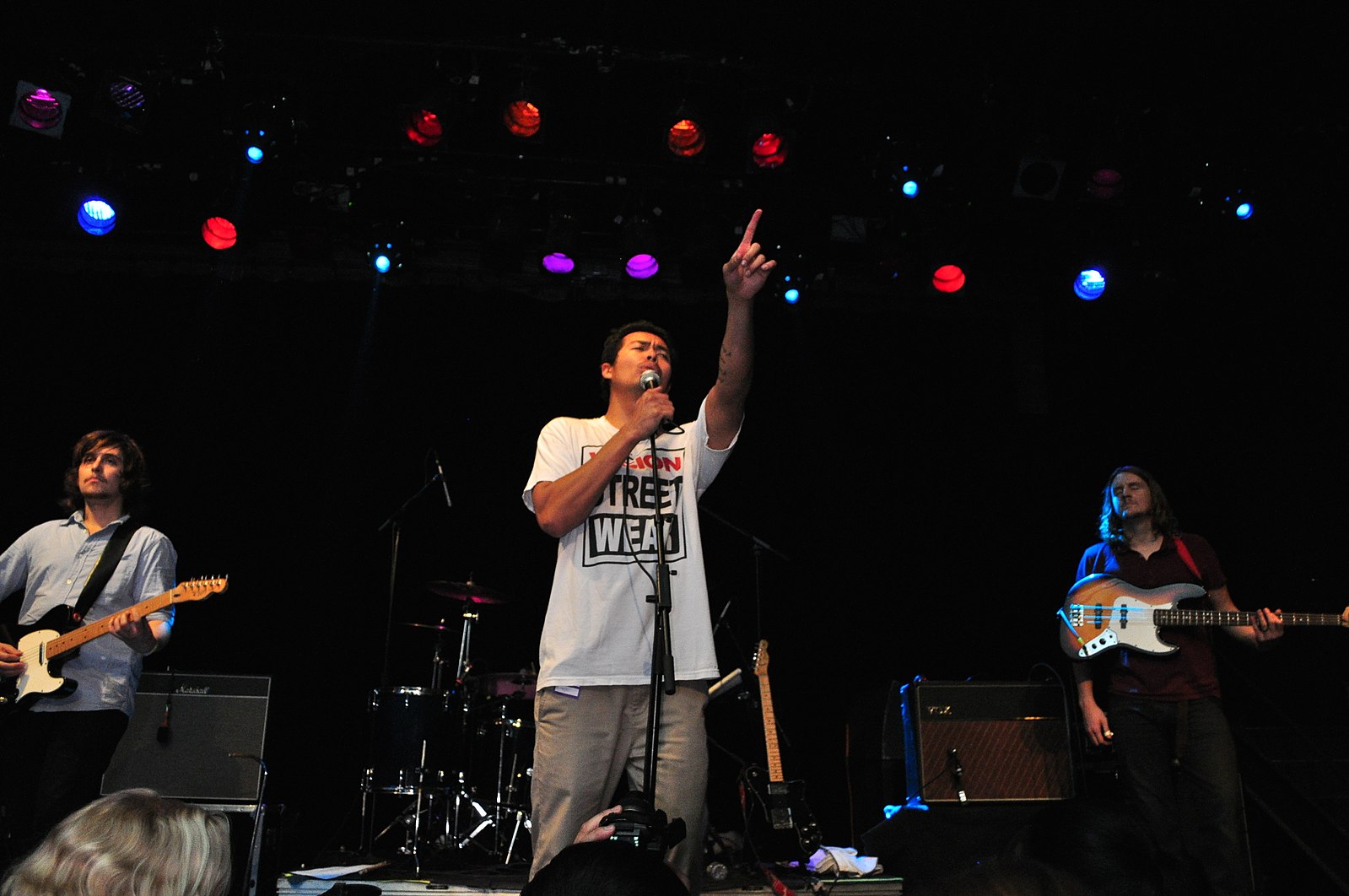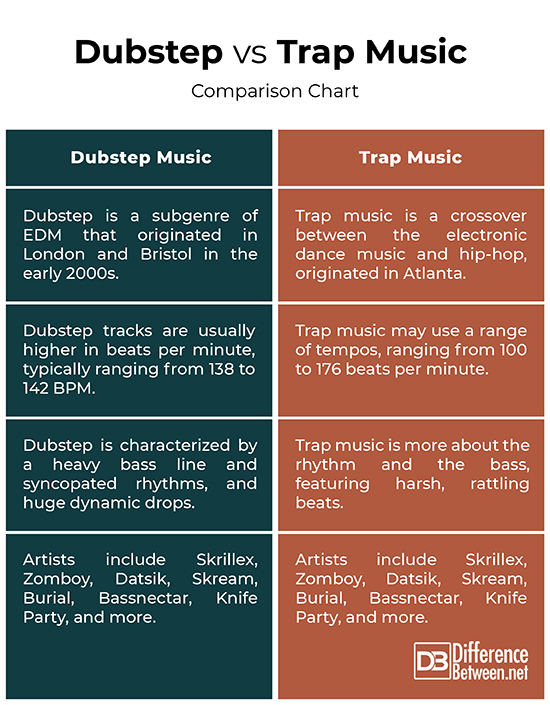Difference Between Dubstep Music and Trap Music
Dubstep OR Trap Music?
Dubstep and trap are the two electronic dance music genres that hail from different traditions but do have their fair share of similarities and differences alike. Dubstep is viewed as a relatively new genre of dance music that stem from London’s multi-ethnic youthful subculture. The one thing that makes a dubstep stand apart is the reverberating sub-bass that is present in almost all productions. Since its inception in the early 2000s, it enjoyed little fame until 2006. Today, bass-punched style of dubstep is one of the most popular styles of dance music on the planet. Dubstep tracks are best recognized by the sparseness of their sound, which is derived from the use of long, deep bass sounds.
Trap is a form of electronic dance music (EDM) that was developed in the early 2000s. Trap is a subgenre of hip-hop music genre that emerged out of the southern hip-hop and rap scene, particularly in Atlanta, Memphis, and Houston in the late 1990s. Trap music has been around for quite some time; in fact, up until the mid-1990s, trap was referred to as a joint where drugs are made or sold. Trap music is known for its harsh sound and grim lyrics that portray the gritty lives of urban poverty and violence. Artists such as Ghetto Mafia and Dungeon Family were some of the first to use the term trap to describe the sound of this type of music.
What is Dubstep Music?
Dubstep is a relatively new genre of dance music that is a combination of two other electronic music subgenres: “dub” music and “2-step” garage. There are also significant influences in the genre from the UK’s Grime subgenre of hip-hop, and some significant contributions from drum & bass. After jungle and garage, dubstep is the latest major addition to a range of computerized dance music styles that hail from London’s multi-ethnic, youthful subculture. It emerged from London and Bristol in the early 2000s, with pioneering producers fusing elements of drum & bass, UK garage, and dub reggae. Today, dubstep is one of the most popular styles of dance music in the world. It can be characterized as featuring heavy-bass lines mixed with a two-step style drum rhythm and dark reverberated chords
What is Trap Music?
Trap is a subgenre of hip-hop music genre that emerged out of the southern hip-hop and rap scene, particularly in Atlanta, Memphis, and Houston in the late 1990s. Unlike dubstep, trap music is more about the rhythm and the bass. Trap music is a crossover between the electronic dance music and hip-hop. The name trap originally referred to as a home or place where drugs are made and sold. Trap music came from the streets of Atlanta in the late 1990s and early 2000s. The genre’s rise to fame coincided with the rise of the infamous Black Mafia Family, known for their lavish lifestyles. Trap music seems to portray that drug-scene narrative so perfectly through the sound of a slow 808 bass drum and a sputtering, triplet hi hats.
Difference between Dubstep and Trap Music
-
Genre
– Dubstep is a relatively new genre of dance music that is a combination of two other electronic music subgenres: “dub” music and “2-step” garage. Trap music, on the other hand, is a crossover between the electronic dance music and hip-hop. Dubstep is a subgenre of EDM that originated in London and Bristol in the early 2000s, with pioneering producers fusing elements of drum & bass, UK garage, and dub reggae. Trap music is a fusion of hip-hop, electro-house, and pop-rap music, and originated in Atlanta in the late 1990s and early 2000s.
-
Rhythm and Tempo
– Dubstep rhythms are usually a little-off of the normal accent, typically by stressing the normally unaccented beats. The dubstep tracks are usually higher in beats per minute, typically ranging from 138 to 142 beats per minute, with a clap or snare usually placed in every third beat in a bar. Dubstep is recognized for its heavy bass lines (often as low as 20 Hz). Trap music, on the other hand, may use a range of tempos, ranging from 100 to 176 beats per minute, but to make older trap music, 90-100 BPM is the best tempo.
-
Artists
– The renowned artists who have been very important to the dubstep genre include Skrillex, Zomboy, Datsik, Skream, Burial, Bassnectar, Knife Party, Flux Pavilion, Digital Mystikz, and more. Artists such as Ghetto Mafia and Dungeon Family were some of the first to use the term “trap”. The trap music genre is responsible for some of music’s hottest artists, including Wakka Flocka, T.I., Migos, Flosstradamus, RL Grime, Drake, Herobust, Baauer, DJ Sliink, Travis Scott, Young Thug, Yellow Claw, and more.
Dubstep vs. Trap Music : Comparison Chart
Summary of Dubstep vs Trap Music
Both are genres of electronic dance music that come from different cultures but share some common features. Dubstep sounds more electronic and has a higher BPM in the range of 138 to 142, whereas Trap is all about the rhythm and the bass, with tempos in the range of 100 to 176 BPM. Trap music is a subgenre of EDM that emerged from the Southern hip-hop and rap scene, particularly Atlanta. Dubstep, on the other hand, is a UK electronic dance style originated in the early 2000s, and later Americanized into a very different style with the same name.
- Difference Between Caucus and Primary - June 18, 2024
- Difference Between PPO and POS - May 30, 2024
- Difference Between RFID and NFC - May 28, 2024
Search DifferenceBetween.net :
Leave a Response
References :
[0]Image credit: https://commons.wikimedia.org/wiki/File:Temper_Trap_Brooklyn_2009.jpg
[1]Image credit: https://commons.wikimedia.org/wiki/File:Budapest,_Dürer_Kert,_The_Dubstep_Story.jpg
[2]Oswald, Vanessa. Hip-Hop: A Cultural and Musical Revolution. New York: Greenhaven Publishing LLC, 2018. Print
[3]Manzo, V.J. and Will Kuhn. Interactive Composition: Strategies Using Ableton Live and Max for Live. Oxford: Oxford University Press, 2015. Print
[4]Snoman, Rick. Dance Music Manual: Tools, Toys, and Techniques. Boca Raton, Florida: CRC Press, 2013. Print
[5]Anniss, Matt. DJing for Beginners. London: Amber Books Ltd, 2016. Print



